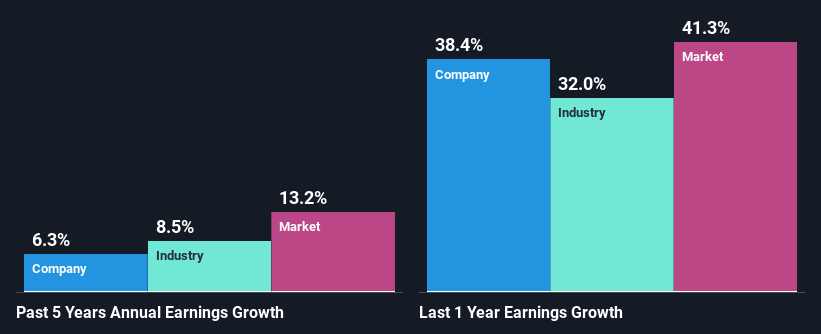Columbus McKinnon Corporation's (NASDAQ:CMCO) Stock Has Seen Strong Momentum: Does That Call For Deeper Study Of Its Financial Prospects?
Most readers would already be aware that Columbus McKinnon's (NASDAQ:CMCO) stock increased significantly by 15% over the past three months. Given that stock prices are usually aligned with a company's financial performance in the long-term, we decided to study its financial indicators more closely to see if they had a hand to play in the recent price move. In this article, we decided to focus on Columbus McKinnon's ROE.
Return on Equity or ROE is a test of how effectively a company is growing its value and managing investors’ money. In simpler terms, it measures the profitability of a company in relation to shareholder's equity.
Check out our latest analysis for Columbus McKinnon
How Do You Calculate Return On Equity?
The formula for ROE is:
Return on Equity = Net Profit (from continuing operations) ÷ Shareholders' Equity
So, based on the above formula, the ROE for Columbus McKinnon is:
3.3% = US$24m ÷ US$735m (Based on the trailing twelve months to September 2021).
The 'return' is the profit over the last twelve months. One way to conceptualize this is that for each $1 of shareholders' capital it has, the company made $0.03 in profit.
Why Is ROE Important For Earnings Growth?
So far, we've learned that ROE is a measure of a company's profitability. Based on how much of its profits the company chooses to reinvest or "retain", we are then able to evaluate a company's future ability to generate profits. Assuming everything else remains unchanged, the higher the ROE and profit retention, the higher the growth rate of a company compared to companies that don't necessarily bear these characteristics.
Columbus McKinnon's Earnings Growth And 3.3% ROE
It is quite clear that Columbus McKinnon's ROE is rather low. Not just that, even compared to the industry average of 13%, the company's ROE is entirely unremarkable. Columbus McKinnon was still able to see a decent net income growth of 6.3% over the past five years. We reckon that there could be other factors at play here. For example, it is possible that the company's management has made some good strategic decisions, or that the company has a low payout ratio.
As a next step, we compared Columbus McKinnon's net income growth with the industry and were disappointed to see that the company's growth is lower than the industry average growth of 8.5% in the same period.
The basis for attaching value to a company is, to a great extent, tied to its earnings growth. What investors need to determine next is if the expected earnings growth, or the lack of it, is already built into the share price. This then helps them determine if the stock is placed for a bright or bleak future. Is Columbus McKinnon fairly valued compared to other companies? These 3 valuation measures might help you decide.
Is Columbus McKinnon Making Efficient Use Of Its Profits?
Columbus McKinnon's three-year median payout ratio to shareholders is 15% (implying that it retains 85% of its income), which is on the lower side, so it seems like the management is reinvesting profits heavily to grow its business.
Besides, Columbus McKinnon has been paying dividends over a period of eight years. This shows that the company is committed to sharing profits with its shareholders.
Conclusion
On the whole, we do feel that Columbus McKinnon has some positive attributes. Specifically, its fairly high earnings growth number, which no doubt was backed by the company's high earnings retention. Still, the low ROE means that all that reinvestment is not reaping a lot of benefit to the investors. Having said that, looking at the current analyst estimates, we found that the company's earnings are expected to gain momentum. Are these analysts expectations based on the broad expectations for the industry, or on the company's fundamentals? Click here to be taken to our analyst's forecasts page for the company.
This article by Simply Wall St is general in nature. We provide commentary based on historical data and analyst forecasts only using an unbiased methodology and our articles are not intended to be financial advice. It does not constitute a recommendation to buy or sell any stock, and does not take account of your objectives, or your financial situation. We aim to bring you long-term focused analysis driven by fundamental data. Note that our analysis may not factor in the latest price-sensitive company announcements or qualitative material. Simply Wall St has no position in any stocks mentioned.
Have feedback on this article? Concerned about the content? Get in touch with us directly. Alternatively, email editorial-team (at) simplywallst.com.

 Yahoo Finance
Yahoo Finance 
